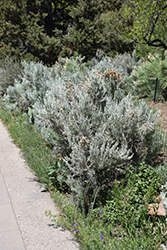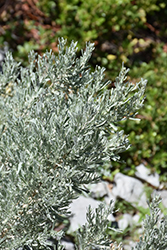It's all about ...
plants

Height: 6 feet
Spread: 5 feet
Sunlight:
![]()
Hardiness Zone: 4a
Other Names: Sage Brush
Description:
A large growing woody shrub needing full sun and room to spread; fine silvery foliage for a great landscape contrast; does best in poor, dry soils, an ideal planting for adverse conditions where little else will grow
Ornamental Features
Big Sagebrush has attractive grayish green deciduous foliage on a plant with an upright spreading habit of growth. The small fuzzy lobed leaves are highly ornamental but do not develop any appreciable fall colour.
Landscape Attributes
Big Sagebrush is a multi-stemmed deciduous shrub with an upright spreading habit of growth. It lends an extremely fine and delicate texture to the landscape composition which can make it a great accent feature on this basis alone.
This shrub will require occasional maintenance and upkeep, and is best pruned in late winter once the threat of extreme cold has passed. Deer don't particularly care for this plant and will usually leave it alone in favor of tastier treats. Gardeners should be aware of the following characteristic(s) that may warrant special consideration;
- Spreading
- Self-Seeding
Big Sagebrush is recommended for the following landscape applications;
- Mass Planting
- General Garden Use
- Naturalizing And Woodland Gardens
Planting & Growing
Big Sagebrush will grow to be about 6 feet tall at maturity, with a spread of 5 feet. It has a low canopy, and is suitable for planting under power lines. It grows at a fast rate, and under ideal conditions can be expected to live for approximately 10 years.
This shrub should only be grown in full sunlight. It prefers dry to average moisture levels with very well-drained soil, and will often die in standing water. It is considered to be drought-tolerant, and thus makes an ideal choice for xeriscaping or the moisture-conserving landscape. As a rule, this plant should never be fertilized. It is particular about its soil conditions, with a strong preference for clay, alkaline soils, and is able to handle environmental salt. It is highly tolerant of urban pollution and will even thrive in inner city environments. This species is native to parts of North America. It can be propagated by division.
This plant is not reliably hardy in our region, and certain restrictions may apply; contact the store for more information.


